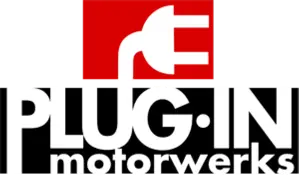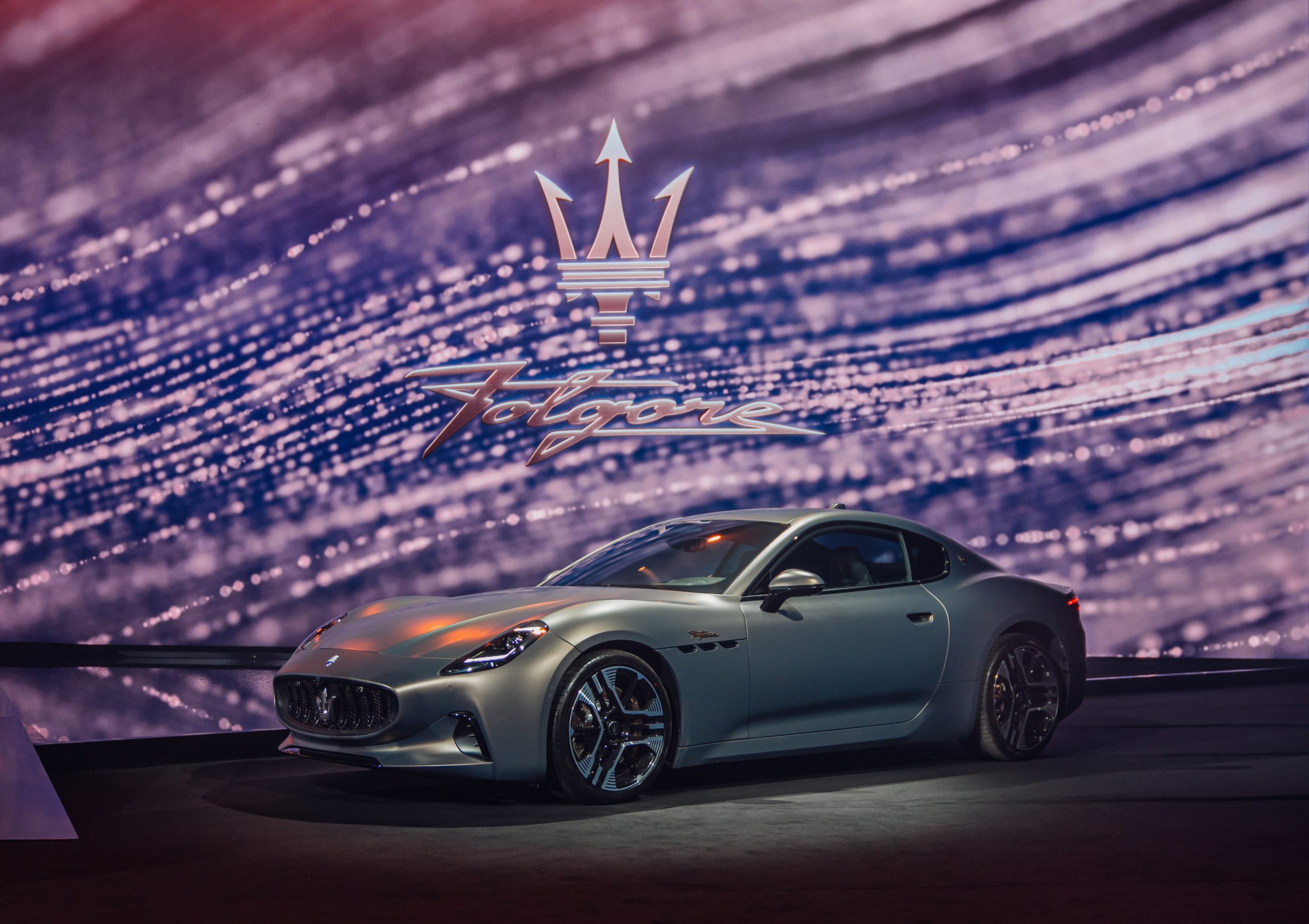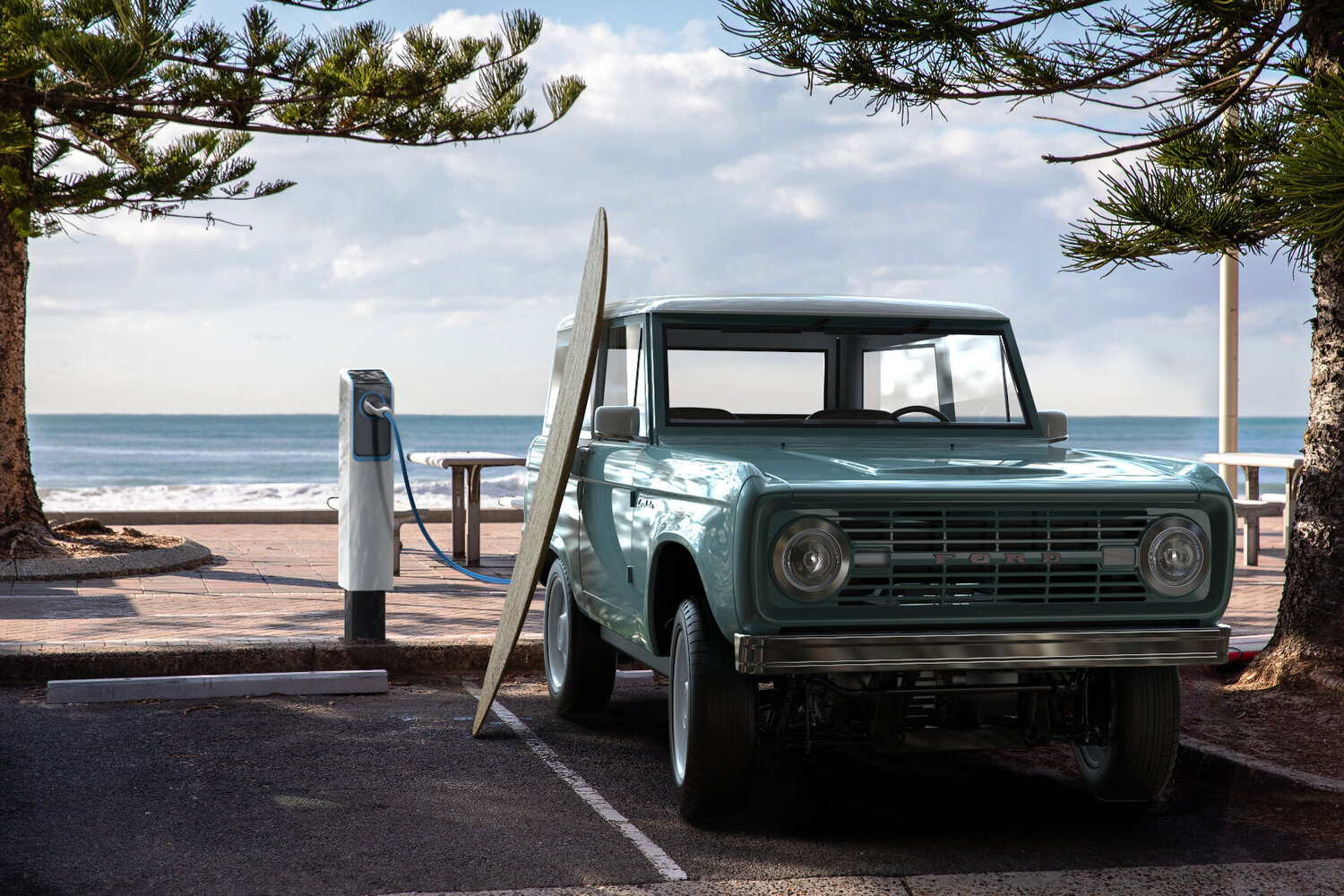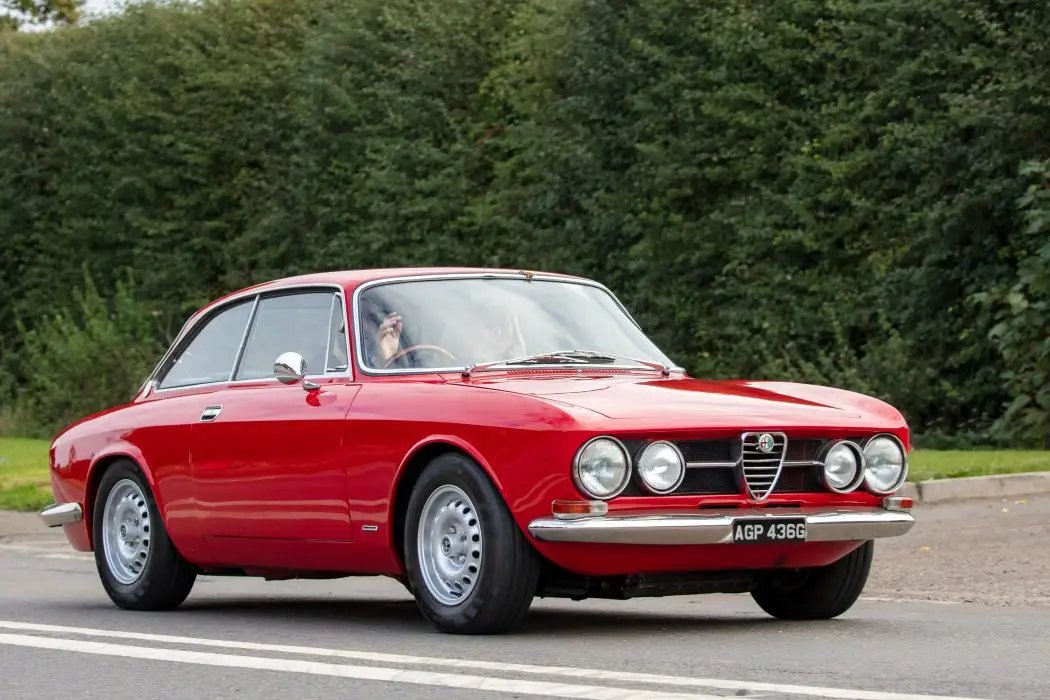Obama’s Massive Plan For Electric Car Charging Stations
The While House released a statement outlining their master plan for electric vehicles. The plan includes 48 electric charging corridors along 25,000 miles of major U.S. highways. The administration is hoping that signs indicating an electric car charging station every 50 miles will assure potential EV buyers of their accessibility.
“We have a duty to help drivers identify routes that will help them refuel and recharge those vehicles, and designating these corridors on our highways is a first step,” US Secretary of Transportation Anthony Foxx said in a statement.
Here is the full press release from the Obama Administration’s website:
Obama Administration Announces New Actions To Accelerate The Deployment of Electrical Vehicles and Charging Infrastructure
Today’s Actions include the Designation of 48 National Electric Vehicle Charging Corridors on our Highways
The Obama Administration is committed to taking responsible steps to combat climate change, increase access to clean energy technologies, and reduce our dependence on oil. Already, in the past eight years the number of plug-in electric vehicle models has increased from one to more than 20, battery costs have decreased 70 percent, and we have increased the number of electric vehicle charging stations from less than 500 in 2008 to more than 16,000 today – a 40 fold increase. But there is more work to do. That is why, today, the Administration is announcing key steps forward to accelerate the utilization of electric vehicles and the charging infrastructure needed to support them.
By working together across the Federal government and with the private sector, we can ensure that electric vehicle drivers have access to charging stations at home, at work, and on the road – creating a new way of thinking about transportation that will drive America forward. Today’s announcements demonstrate a continued partnership between the Administration, states, localities, and the private sector to achieve these shared goals:
For the first time, the United State Department of Transportation (DOT) is establishing 48 national electric vehicle charging corridors on our highways, these newly designated electric vehicle routes cover nearly 25,000 miles, in 35 states.
28 states, utilities, vehicle manufactures, and change organizations are committing to accelerate the deployment of electric vehicle charging infrastructure on the DOT’s corridors;
24 state and local governments are committing to partner with the Administration and increase the procurement of electric vehicles in their fleets;
The United States Department of Energy (DOE) is conducting two studies to evaluate the optimal national electric vehicle charging deployment scenarios, including along DOT’s designated fueling corridors; and
38 new businesses, non-profits, universities, and utilities are signing on to DOE’s Workplace Charging Challenge and committing to provide EV charging access for their workforce.
Today’s announcements build on a record of progress from multiple programs across the Administration that work to scale up EVs and fueling infrastructure, including at the Departments of Energy, Transportation, Defense, the Environmental Protection Agency and with the private sector. This summer, the Administration opened up to $4.5 billion in loan guarantees to support the commercial-scale deployment of innovative electric vehicle charging facilities and in collaboration with the Administration, nearly 50 industry members signed on to the Guiding Principles to Promote Electric Vehicles and Charging Infrastructure. This effort launched the beginning of a collaboration between the government and industry to increase the deployment of EV charging infrastructure that is carried forward in the announcements today.
ADVANCING THE DEPLOYMENT OF ELECTRIC VEHICLE CHARGING INFRASTRUCTURE ALONG OUR HIGHWAYS
Establishing 48 National Electric Vehicle Charging Corridors on our Highways: The U.S. Department of Transportation’s Federal Highway Administration (FHWA) today announced 55 Interstates that will serve as the basis for a national network of “alternative fuel” corridors spanning 35 states plus the District of Columbia. Today’s announcement includes designating 48 out of the 55 routes electric vehicle charging corridors, totaling almost 25,000 miles of electric vehicle routes in 35 states. To make it easier for drivers to identify and locate charging stations, states designated as “sign-ready” are authorized to use signs developed by FHWA that identify electric vehicle charging stations and other alternative fuels along the highways similar to existing signage that alerts drivers to gas stations, food, and lodging. Drivers can expect either existing or planned charging stations within every 50 miles.
28 States, Utilities, Vehicle Manufactures, and Change Organizations Commit to Accelerate Electric Vehicle Deployment on DOT’s Corridors: Today, the following organizations are committing to help accelerate the deployment of electric vehicle charging infrastructure along the Alternative Fuel Corridors designated by the U.S. Department of Transportation. These initial and future corridors will serve as a basis for a national network of electric vehicle charging infrastructure to enable coast to coast zero emission mobility on our nation’s highways:
Ameren Missouri
Berkshire Hathaway Energy
BMW
ChargePoint
Connecticut Green Bank
Edison Electric Institute
Electric Drive Transportation Association
EV Connect
Eversource Energy
EVgo
General Electric
General Motors
Greenlots
Kansas City Power & Light
MidAmerican Energy Company
New York State
Nissan
NV Energy
Pacific Gas & Electric (PG&E)
Pacific Power
PlugShare
Portland General Electric
Public Service Company of New Mexico
Rocky Mountain Power
Skychargers
Southern California Edison
Texas-New Mexico Power
Vision Ridge Partners
Conducting Two Studies to Evaluate the Optimal National EV Charging Deployment Scenarios: Early next year, DOE plans to publish two studies developed with national laboratories and with input from a range of stakeholders to support broad EV charging infrastructure deployment, including along DOT’s alternative fuel corridors. The first is a national EV infrastructure analysis that identifies the optimal number of charging stations for different EV market penetration scenarios. The second will provide best practices for EV fast charging installation, including system specifications as well as siting, power availability, and capital and maintenance cost considerations.
Continuing to Partner with Stakeholders to Build Charging Infrastructure Along the National Charging Corridors: The White House will be convening key stakeholders in November 2016 to continue to encourage state and local governments and businesses to build public electric vehicle charging infrastructure along our national highways.
SUPPORTING STATE AND LOCAL PARTNERSHIPS TO INCREASE THE ELECTRIC VEHICLES ON THE ROAD
Partnering with 24 State and Local Governments to Electrify our Vehicle Fleets: Building on the Administration’s policy to reduce greenhouse gas emissions (GHG) from Federal Fleets by 30 percent by 2025, today, we are announcing twenty-four state and local governments have joined the Federal government to electrify our fleets. These new commitments will account for over 2,500 new electric vehicles in 2017 alone, and help pave a path for a sustained level of purchases into the future. By working together, Federal, state and local leadership can aggregate demand to lower purchase costs through increasing automotive manufactures’ demand certainty, promote electric vehicle innovation and adoption and expand our national electric vehicle infrastructure. The cumulative benefit of the commitments announced today include more than one million dollars and 1,211,650 gallons in potential annual fuel savings. These state and local government commitments include:
States
California state agencies strive to cut greenhouse gas emissions and since 2010, GHG emissions from state operations have been cut in half. Incorporating zero-emission vehicles (ZEV) into the state fleet is a central component of the state’s sustainability strategy. Fulfilling a commitment made by Governor Brown in 2012, more than 10 percent of non-public safety light duty vehicles purchased by the State of California in fiscal years 2014/2015 and 2015/2016 were zero-emission vehicles. In support of the 2016 ZEV Action Plan, the state commits to increasing the number of non-public safety light duty ZEVs to 50 percent by 2025. To reach that goal, the state will target yearly step increases of 5 percent (beginning in fiscal year 2017/2018), over its current 10 percent purchasing commitment.
For 2017, the State of California commits to purchase a minimum of 150 ZEVs for its fleet, bringing the total to over 600 ZEVs in the state fleet.
California commits to providing electric vehicle charging at a minimum of 5 percent of state owned parking spaces by 2020.
Minnesota has developed a fleet action plan to reduce greenhouse gas emissions that involves transitioning the state’s predominately internal combustion engine light fleet to a fleet integrating hybrid electric vehicles; plug-in electric hybrid vehicles; and zero emission vehicles. This plan will decrease petroleum consumption by 25 percent and result in a decrease in GHG emissions of 21 percent. Cost savings for fuel and maintenance is expected to be $2.5 million annually. Minnesota has set its commitment as follows:
Acquire 25 PHEV/ZEVs in Fiscal Year 2017.
Install 15 Level 2 charging stations in Fiscal Year 2017.
Require all new vehicles have EPA ratings of 7 or higher.
Achieve a fleet composition of 20 PHEV or ZEV by 2027.
Montana’s State Energy Office commits to swapping out two hybrid vehicles for two plug-in hybrid electric vehicles in 2017. These vehicles will be the first plug-in electric vehicles in Montana’s state fleet and will help Montana better understand how electric vehicles can be incorporated into the fleet as well as the charging infrastructure necessary to support these vehicles. Montana commits to reaching out to local governments and universities about opportunities for electrification from the VW settlement allocation.
Rhode Island commits to purchasing 25 percent of new light-duty state vehicles as electric by 2025.
Vermont commits to convert 50 percent of its state motor pool to plug-in electric vehicles by the end of 2017 which far exceeds the previous level of 38 percent. Vermont is also committing to purchase 10 percent of the total State’s centralized light duty fleet, including agency and department assigned vehicles, as plug-in electric by the end of 2017 which far exceeds the 7 percent accomplished this year. And to install one dedicated charging port for each of these vehicles at the locations where they are parked and assigned to employees for state trips.
Washington is committed to reducing carbon pollution from the transportation sector and deployment of electric vehicles is a critical element of the governor’s climate strategy. Last December, Governor Inslee announced a new Washington State Electric Fleets Initiative to accelerate adoption of electric vehicles in public and private fleets. This initiative will ensure that at least 20 percent of all new annual state passenger vehicle purchases are EVs, beginning in 2017.
In 2017, Washington State’s cabinet agencies commit to purchasing 250 EVs and installing 125 new level 2 charging stations.
Cities
The City of Atlanta has reduced GHG emissions 12.5 percent and fossil fuels by 23 percent since 2008. The City commits to further reducing GHG emissions 40 percent by 2030 through the continued addition of zero emission vehicles and electric infrastructure. The City is encouraging public adoption of electric vehicles and is installing charging stations in 100 dedicated EV parking spaces at the Hartsfield Jackson Atlanta International Airport by the end of 2016. The City commits to convert 20 percent of its municipal fleet to electric vehicles by 2020 through commitments to:
Construct an additional 300 charging stations at Hartsfield-Jackson International Airport by the end of 2017.
Spend $3,000 dollars per electric vehicle for infrastructure installation through December 2018.
Conduct an education campaign for City employees about efficient usage of electric vehicles and charging stations.
Columbus, Ohio has long served as a committed pioneer of alternative fuel fleet vehicle adoption. Columbus was selected as the winner of the Smart Cities Challenge grant from the U.S. Department of Transportation in June 2016. Initiatives under the program include fleet electrification, electric vehicle charging infrastructure, smart lighting and traffic signals, self-driving technology, connected vehicles, transportation apps and other initiatives to modernize Columbus’ transportation system. Columbus commits to,
Procure 200 electric vehicles for its fleets and install the appropriate charging infrastructure over the next three years.
Add 1,600 new Level 1 and 300 new Level 2 charging stations in the region.
Add 448 electric vehicles to city’s private fleets.
The City of Fort Collins is deeply committed to the reduction of greenhouse gas emissions and improving residents’ lives through the efficiencies and savings produced by these efforts. The City organization is trying to lead by example in its fleet composition and purchasing guidelines and taking strategic actions to reduce its transportation GHG footprint by purchasing electric and hybrid vehicles.
In 2017, the City of Fort Collins commits to purchase seven new electric vehicles, some of which will replace standard gasoline engine vehicles.
Fort Collins will continue to provide an electric charging station for each electric vehicle in the fleet in 2017.
The City of Denver is proud to join the White House in making an ambitious commitment to incorporate plug-in electric vehicles into our operations. Denver is leading by example, with the city taking a prominent role in transitioning its operations to more sustainable fuel sources. This action will not only move Denver towards its 2020 sustainability goals and reduce costs, but inspire other businesses, cities and residents to consider how plug-in electric vehicles could work for them. Denver commits to procure and operationalize 200 Plug-in Electric Vehicles and required infrastructure by 2020.
The City of Detroit is committed to modernizing its overall fleet through the use of cleaner transportation technologies. This commitment is reflected in part by new efforts to increase the percentage of city service vehicles that are electric, develop new charging infrastructure, and join the U.S. Department of Energy’s Workplace Charging Challenge. These activities are in-line with the City’s broader sustainable transportation efforts. Detroit commits to:
Purchase 10 percent of service vehicles as plug-in electric in 2017.
Set an annual goal of 10 percent of light-duty replacement vehicles purchased be plug-in electric.
Use Low Speed Electric Vehicles for transit police and safety and security staff.
The City of Los Angeles commits to tackle climate change and will procure 50 percent of all new light duty vehicles as battery electric vehicles by 2017 and 80 percent of municipal-fleet procurements as BEVs by 2025.
LA commits to nearly triple the city’s current plug-in electric fleet from 165 BEVs and 38 PHEVs to over 400 BEVs and 155 PHEVs by the end of 2017. Of those 352, 200 will be for the LA Police Department.
LA will spend $22.5 million dollars on electric vehicle charging stations by June 2018, which includes making 500 additional public electric vehicle charging stations available throughout the city by the end of 2017, for a total of 1,500.
LA will launch an EV car share for disadvantaged communities by 2017.
LA will electrify 10 percent of the Los Angeles Department of Transportation bus fleet by 2017.
LA will test 20 near-zero emission natural gas tractors at the LA Port and plan for five zero emission plug-in battery yard tractors at the LA Port container terminal.
The City of New York commits to invest in at least autonomous 30 solar power carports for charging of City EV fleet citywide and will also provide some public access as part of this initiative and implement over 200 Stealth alternative power units and batteries in City ambulances that will reduce idling and enable these units to charge up through land based EV chargers.
The City of Pittsburgh commits to purchase 6 new electric vehicles annually for the next three years. The charging infrastructure for these vehicles will service the public during the day and charge Pittsburgh’s fleet vehicles at night.
The City of Portland, Oregon is deeply committed to reducing carbon emissions. In 1993, Portland was the first U.S. city to develop a plan to address climate change and in 2009 a goal was established to reduce carbon emissions 80 percent from 1990 levels by 2050, with an interim goal of 40 percent by 2030. Electrifying the transportation system is a critical piece of Portland’s strategy to reduce carbon emissions and Portland’s 2015 Climate Action Plan contains transportation-related actions including a commitment to lead by example by electrifying the City’s fleet vehicles. Portland commits to increasing the percentage of its electric and plug-in electric hybrid sedan fleet from 20 percent to 30 percent by 2020.
The City of San Francisco was an early and strong proponent of coordinated urban and regional climate action across jurisdictional and national borders, including efforts to decarbonize both the transportation and energy sectors. From 1990 to 2014, carbon emissions declined 24 percent. In The City has a history of transport electrification—foremost in its public transport. San Francisco’s Municipal Transportation Authority operates the City’s historic cable car lines, the nation’s largest fleet of 333 electric trolley buses, plus 151 metro streetcars and 26 historic streetcars. This fleet collectively drives 24.7 percent of the citywide passenger miles traveled and uses clean, greenhouse gas-free electricity from San Francisco’s Hetch Hetchy hydropower system. To date, the City has procured over 60 electric vehicles and 130 charging stations across 20 municipal facilities. Out of San Francisco’s fleet of 5,200 vehicles,
San Francisco commits to purchase a minimum of 10 percent of new Fleet vehicles annually as electric vehicles.
San Francisco will continue working with the Pacific Coast Collaborative and West Cost Electric Fleets Initiative to pool resources to lower procurement costs.
The City of Seattle is nationally recognized as operating one of the greenest fleets in the country. Seattle was an early investor in fleet electrification, and now operates one of the largest municipal fleet of electric vehicles in the nation. Drive Clean Seattle is a key piece of the City’s climate action agenda and is a comprehensive commitment to electrify transportation. Seattle commits to a 50 percent reduction in greenhouse gas pollution from the municipal fleet by 2025 and will achieve this in part through committing to:
Purchase 100 EVs through 2017, to achieve 40 percent electrification of its current light duty fleet.
Purchase 250 EVs by 2020, with a target of 400 EVs by 2023 to achieve 100 percent of light duty fleet.
Install 200 electric vehicle charging stations for fleet vehicles in 2017/2018, 300 electric vehicle charging stations by 2020 and 400 electric vehicle charging stations by 2023.
Work with Original Equipment Manufacturers to participate in fleet demonstrations of EV technology in medium and heavy duty vehicles over the next five years.
Sign on to the U.S. DOE Workplace Charging Challenge and write a new workplace charging policy in 2017.
Municipalities
Arlington County, Virginia is committed to a 76 percent reduction in greenhouse gas emissions from all sources, including transportation, by 2050. To that end, Arlington County commits to ensuring five percent of vehicle-miles traveled by County fleet sedans be in electric vehicles by 2020.
Boulder County commits to:
Replace 5 sedans with electric vehicles and 9 sports utility vehicles (SUVs) with hybrid SUVs by 2020.
Offer aggregated purchase programs for EVs to our residents and employees in 2017 and 2018 for volume discounts.
Install 4 electric charging stations by 2020.
Support workplace charging, and continuing to offer our employees, residents and businesses education, incentives and advising on EVs and sustainable transportation.
The Monterey County Board of Supervisors adopted a Municipal Climate Action Plan (MCAP) in 2013 outlining the Board’s goal of reducing greenhouse gas emissions to 15 percent below 2005 emission levels by 2020. In Fiscal year 2015-2016 the county is at 52 percent of its GHG goal in part, through the purchasing of 12 electric vehicles.
In Fiscal Year 17 Monterey County commits to installing 2 new electric vehicle charging stations.
The County of Sacramento’s Municipal Utility District (SMUD) has a strong commitment to reducing Greenhouse Gas emissions (GHG) in all of its operations, including a net long-term GHG emissions reduction of 90 percent from its 1990 levels by 2050. SMUD commits to:
By year-end 2017, expand electric and plug-in electric vehicle fleet to 27 sedans, 21 trouble trucks with electrified buckets and 16 electric lift trucks.
Given product availability, by 2020, have a fleet comprised of 45 BEV/PHEV sedans, 7 PHEV SUVs, 30 PHEV pickup trucks, 16 pickup trucks with zero RPM idle reduction technology, 50 trouble trucks with electrified buckets, 4 cable pullers and 26 lift trucks.
By the end of 2017, add 15 Level 2 electric vehicle charging stations and 45 Level 1.
Increase workplace charging participation from 32 to 60 by the end of 2017
Increase workplace charging participation from 110 by the end of 2020
San Mateo County is committed to reducing greenhouse gas emissions with its vehicle purchasing policy requires that new non-specialized vehicle purchases be hybrid, alternative fuel or zero emission vehicles. In 2017, the County is making the following commitments:
Purchase 10 new electric vehicles (approximately 15 percent of non-specialized vehicle purchases).
Install a minimum of two new electric vehicle charging stations.
In future years, the county anticipates to further green its fleet by either maintaining or accelerating the commitments outlined for 2017.
Sonoma County in California is continuing its commitment to reducing greenhouse gas emissions through integrating plug-in electric vehicles into the County’s Fleet, expanding the electric vehicle charging infrastructure necessary to support these vehicles and encouraging public adoption of the technology. Since 2002 the County has achieved reductions in fuel usage of 191,417 gallons and 1,701.1 metric tons of CO2 produced. Sonoma County commits to:
Purchase 20 new electric vehicles for the County fleet by the end of 2017 and 6 new electric vehicles by the end of 2019.
Install 23 new Fleet-use only electric vehicle charging ports by 2018 and 12 public electric vehicle charging ports spanning 3 different sites by 2018.
Ulster County, New York, has committed to reducing GHG emissions from County government operations 25 percent by 2025. In order to reach this goal, Ulster is electrifying their fleet while simultaneously supporting the deployment of electric vehicles throughout the region. In 2015, Ulster County passed a Green Fleet Policy requiring 5 percent of the fleet be alternative fuel vehicles by 2020. Ulster County will meet its 5 percent goal in 2017, three years ahead of the 2020 target. After 2020, Ulster commits to purchase 20 percent of new fleet vehicles on an annual basis as alternative fuel or green vehicles. Toward their effort of implementing this policy, Ulster County has deployed 4 PHEV sedans and ordered 4 additional PHEVs in 2016. The county commits to purchase an additional 10 PHEVs and 1 BEV in 2017. Ulster County has been a partner in the U.S. DOE Workplace Charging Challenge since 2015 and offers free workplace charging to 97% of its employees. The County commits to continuing to support tourists and its employees and install an additional six electric vehicle charging stations in 2017.




